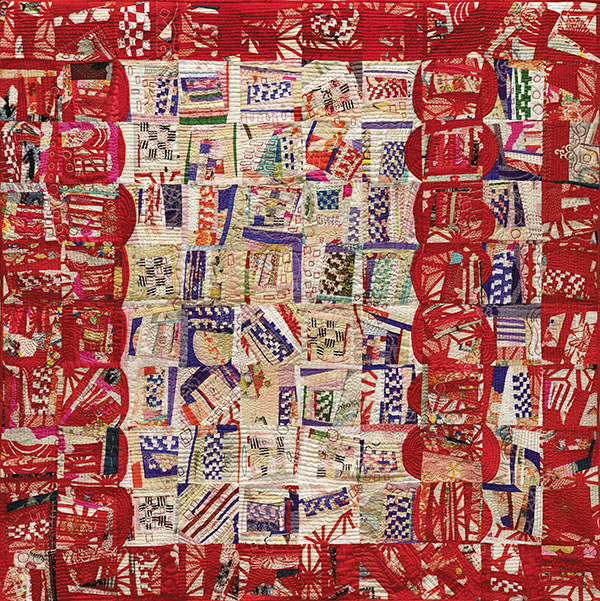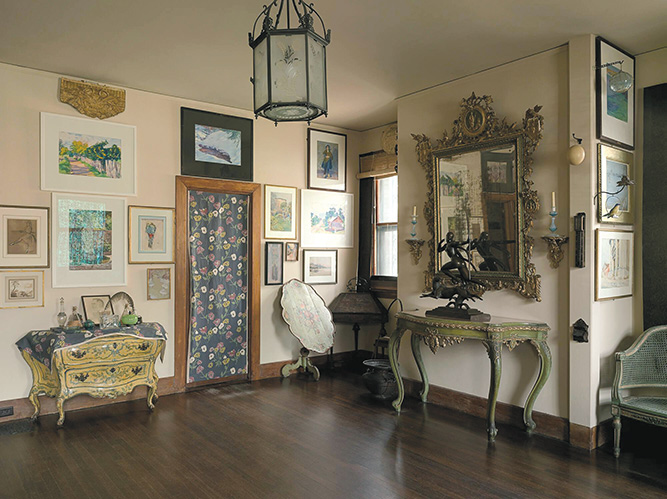Q&A
Insights and Outlooks from Museums Across the Region

Compiled by Autumn Duke
What’s on Your Immediate Horizon?
We’ve got an Aurora Robson exhibit opening [in June]. Part of that is going to be a community collaborative art project where visitors are invited to bring cleaned out bottle caps and contribute them to this artwork. There will be pools of bottle caps sorted by color on the floor of the museum as part of her artwork. She takes plastic waste out of waterways, cleans it and then turns it into sculpture. —Kirsten Martsi, manager of education and community engagement programs, Brattleboro Museum & Art Center, Brattleboro, VT
We have an exhibition opening in May from an art museum in Tokyo. This is sort of the crème de la crème of international quilt exhibitions. It’s called Quilts of Japan, the 16th Quilt Nihon. It’s a biennial competition in Tokyo, and then it travels, and we began hosting it about a decade ago. In August, we have our own biennial called Summer Celebration of New England Quilts and we open the museum admission-free during that period. We exhibit quilts that are made by quilt guilds all over New England. —Nora Palermo, executive director, New England Quilt Museum, Lowell, MA
We just opened an exhibition called Eric Carle Japan which explores his love of all things Japanese. The idea of founding The Carle began in the 1990s when he and his wife Barbara were touring picture-book art museums in Japan. The exhibition includes original illustrations by Carle and Kazuo Iwamura from their book Where Are You Going? To See My Friend! (2001), a cross-cultural collaboration between two picture-book giants. —Alexandra Kennedy, executive director, The Eric Carle Museum of Picture Book Art, Amherst, MA
We have an incredible exhibit [this summer], Decoding the Domestic. The photographic work focuses on how an artist’s surroundings can affect and inspire their work. The images leap ahead embracing the avant-garde whilst nodding backwards at the art historical themes of still life, interiors, landscape and studio work. It makes us question, ‘Is anything really new?’ The images are beautiful and explore contemporary theory, new technologies and media. —Denise Froelich, director, Maine Museum of Photographic Arts, Portland, ME

Visitors should look for our brand-new exhibit of For Business or Pleasure?: Twain’s Summer Sojourns and exhibit-related events such as a PaintSip and a drag show, to be announced! —Alana Borges Gordon, marketing associate, Mark Twain House & Museum, Hartford, CT
Share a Favorite Piece of Art or a Personal Inspiration in Your Role
It’s difficult to choose, but one of my favorites is Mason’s Island Cove by Henry Ward Ranger on view in the museum’s permanent collection American Perspectives. This small scene shows a New England shoreline and, to me, depicts a moment of summertime joy. When looking at the painting, one can almost feel a warm summer breeze and the salty smell of the ocean. —Rebecca Dawson, director of communications and visitor services, Lyman Allyn Art Museum, New London, CT
My job is education and community engagement and I really like community engagement. I like the education side, too, yet right now, I really enjoy working with the Afghan community that’s here and the creativity and energy around those folks. We’re going to hold Eid at the Museum this year, and have a celebration for that. So that’s been bringing me a lot of joy and has been really fun lately. —Kirsten Martsi
My favorite part is the Library where Twain used to pick an object off the fireplace mantel and tell stories to his daughters that he made up on the spot based on them! —Alana Borges Gordon
One area of the museum that is very captivating is the first-floor exhibit called Yousuf Karsh: Celebrating Humanity. This exhibition is hugely popular, and it is a who’s who of major figures from the iconic Hemingway and Churchill portraits, to successful Armenians like Stephen Mugar and Vartan Gregorian. The 22 original prints created by the Canadian-Armenian photographer were donated to the museum by his widow Estrellita Karsh. —Jason Sohigian, executive director, Armenian Museum of America, Watertown, MA
The Museum’s blooming Courtyard can’t be beat. There is a wonderful mix of the ordinary and exotic. The Macknight Room is my favorite gallery because of its warmth and intimacy. It’s one of the rooms that Isabella used more privately for her guests and I think that’s reflected in the way that she curated it. —Wanessa Tillman, director of visitor services, Isabella Stewart Gardner Museum, Boston, MA

Please Share an Exclusive Fun Fact or Museum Secret!
We are the first museum to open a gallery to support our budgetary, academic and outreach goals. And I’ll tell you why. The fun fact should have a little data behind it. A third of the galleries and museums in the world have closed permanently because of COVID. And honestly, you’re going to see museums doing all kinds of things that were never done in the past. —Denise Froelich
I would say the piece that people might wonder about, but not know the answer to, is whether or not the house is haunted. There’s a mixed opinion on that. We have many visitors who have unusual but similar experiences such as the smell of cigar smoke, or they hear dogs barking when there are no dogs, or sometimes, occasionally they might feel someone pulling on their hair. —Susan Wissler, executive director, The Mount, Edith Wharton’s Home, Lenox, MA
What people don’t often realize is that [Isabella] intended the top floor to be used as the home of Museum’s directors after her death. And it actually was until 1990. At that time, the museum was really growing, and more space was needed for staff and operations so that part of Isabella’s will was able to be amended in order to accommodate for the Museum’s growth. —Wanessa Tillman
The biggest work of art in the Museum of Art’s collection is not in the museum. We are in charge of the Orozco murals, which are located in the basement of the library. They’re one of two major mural suites in the country by Mexican muralists. The other one is in Detroit and this one is here at Dartmouth. It’s by José Clemente Orozco, The Epic of American Civilization, 1932 to 1934. —John Stomberg, Virginia Rice Kelsey 1961s Director, Hood Museum of Art at Dartmouth College, Dartmouth, NH
In the aftermath of World War I, Armenia declared its independence in 1918 and had a short-lived republic. It was a democratic country where women not only had the right to vote, but they served in office as parliamentarians decades before women even had the right to vote in America! —Jason Sohigian
As the Conversation Around Accessibility Evolves, Please Share Recent Changes in Your Museum
Since opening day in 1932, the museum has been free to all New London residents. This initiative, at our founder’s request, represents her desire to ensure that the Lyman Allyn is recognized as the community’s museum. With handicapped accessibility throughout, the museum also focuses on serving the area’s schoolchildren through subsidized field trips and programming. We also have available multilingual family guides. The Lyman Allyn looks forward to even more opportunities to serve the public with plans to develop its grounds into a regional gathering place and urban art park with an open-air amphitheater and outdoor learning spaces. —Rebecca Dawson
We’ve got accessible parking, virtually contiguous to the house. We also now publicize golf cart tours for people who have difficulty walking. There is elevator access to all three floors of the house. Seating is available throughout the house for all. We recently completed an audio tour in both Spanish and English and in all of our exhibits, we follow universal design principles in consultation with the Mass Cultural Council and their universal participation program. —Susan Wissler
We have invested in a wheelchair accessible entrance. The museum offers an elevator and handicapped bathrooms in the galleries, and I think for a small organization confined in a very difficult historic building, we do a pretty good job. We really go out of our way to make every person who walks in the front door feel like a guest as opposed to a visitor. There are things that we can do just in how we engage with them one-on-one. —Nora Palermo
We offer a wheelchair-accessible outdoor space named Bobbie’s Meadow, non-gender bathrooms, assisted-listening devices that are available for our auditorium programs, and qualifying visitors receive free admission. The Carle is the first art museum in Massachusetts to offer visitors EnChroma glasses, eyewear which enables people with red-green color blindness to see an expanded range of color. —Alexandra Kennedy
There’s a difference between being invited to the dance and having an opportunity to dance. We are free and open to the public. We also strive to host enjoyable exhibitions without having a degree in art history. That’s really important to us. —John Stomberg
